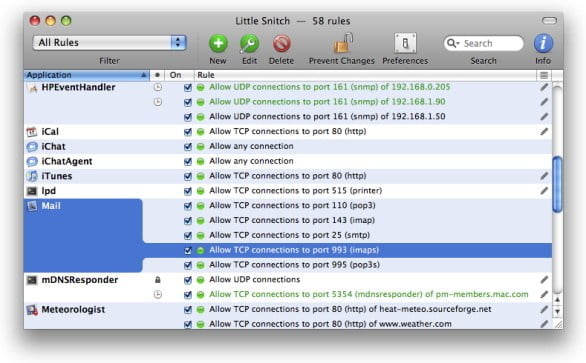Assuming you’ve downloaded the Little Snitch Disk Image (.dmg file) to your Downloads folder, open a new Terminal window and enter the following command to verify the cryptographic signature of the downloaded file:
codesign --verify -R='anchor apple generic and certificate leaf[subject.OU] = MLZF7K7B5R' ~/Downloads/LittleSnitch*.dmg

If the result of this command is empty (no error message is shown), the file is intact and properly signed by Objective Development.
However, if an error message is shown (like “not signed at all” or “failed to satisfy specified code requirement(s)”), this indicates that the file was maliciously modified and is no longer signed by Objective Development. In that case you should NOT open the disk image file.
Sep 07, 2018 Little Snitch is a firewall application and, as you may know, your Mac has a built-in firewall that you can turn on and use to quietly block unauthorized incoming network connections. So why buy a separate app if you already have something built-in? The answer is simple: Little Snitch does more than just block or allow incoming network connections.
Little Snitch Tutorial How-to Download


Little Snitch Tutorial How-to Pdf
- How to block Little Snitch from calling home and killing numbers:
- 1. The first step is to block Little Snitch with Little Snitch. Create two new rules in Little Snitch as below:
- a) Deny connections to Server Hostname http://www.obdev.at in LS Configuration. The address that will appear if you do it correctly is 80.237.144.65. Save.
- and the next is:
- b) Deny connections in LS Config to the application Little Snitch UIAgent (navigate to /Library/Little Snitch/Little Snitch UIAgent.app, any server, any port.
- 2. After that is done, open the Terminal (in your Utilities) and paste in:
- sudo /Applications/TextEdit.app/Contents/MacOS/TextEdit /etc/hosts
- (Hit return and type in your admin password). A TextEdit window will open behind the Terminal window. Command+Tab to it - this is your hosts file.
- 3. Place your cursor at the end of the text there, type or leave one vertical space and paste in the following:
- # Block Little Snitch
- 4. Close TextEdit, hit Command+Tab to return to the Terminal window, and paste in the following:
- sudo dscacheutil -flushcache
- 5. Hit the Return key and quit Terminal. You're finished now.
- 6. Easy, isn't it. If only everyone would do this, the developer would cease and desist from killing the number that you personally are using successfully on your Mac. At least until the next version is released…